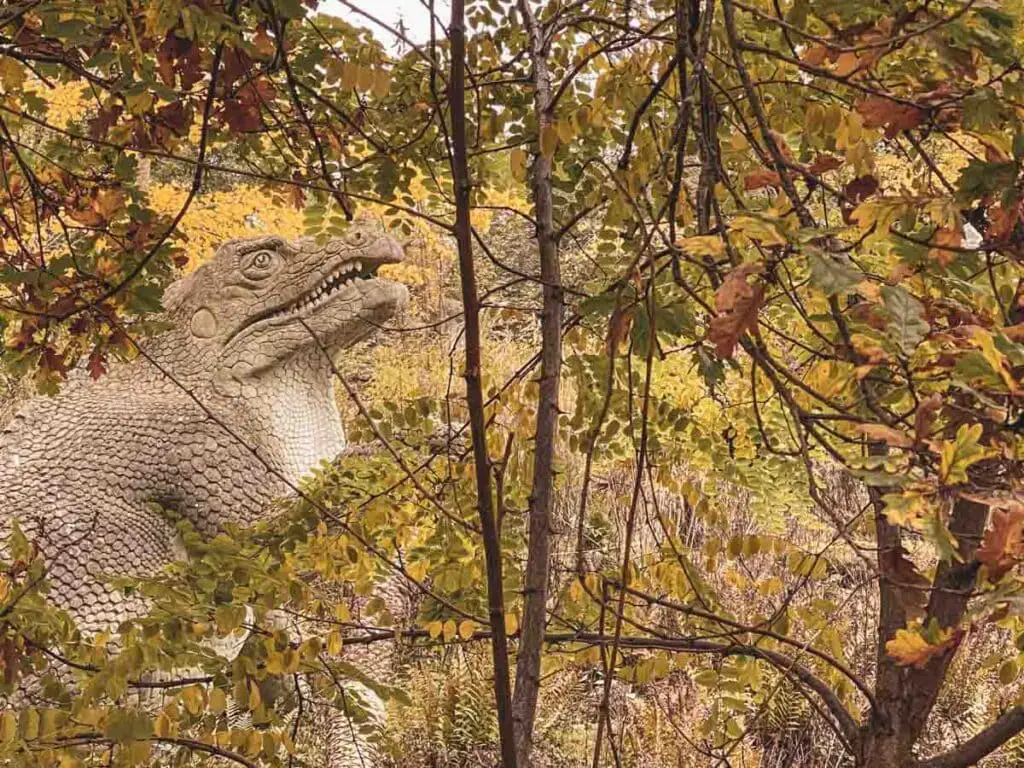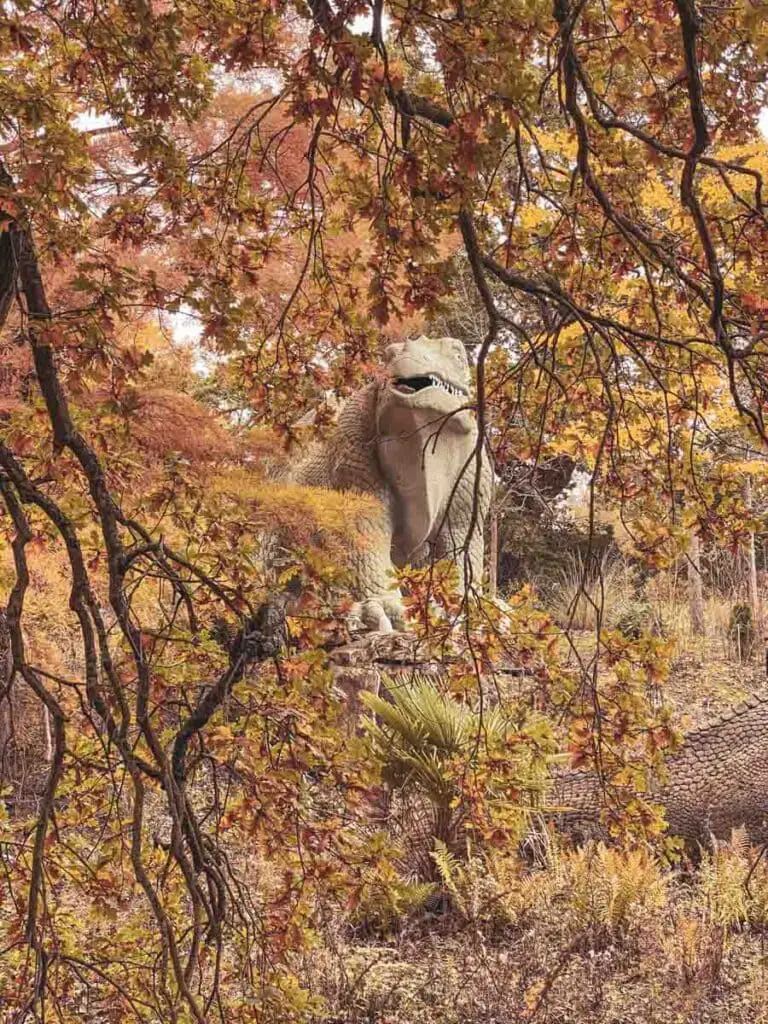Hidden in the midst of Crystal Palace Park, away from the expansive ruins of the old exhibition, you’ll find one of South London’s most unusual sights – the Crystal Palace dinosaurs.

Sporting bulging bodies, they sit placidly, squat-legged and with bulbous features, in various positions around one of the park’s many lakes.
Eyes peep from the undergrowth, a reptilian face looms from the swaying branches of a weeping willow – if you don’t come looking for them, you may well think that they’re a particularly strange hallucination. They’re not.
But why do the Crystal Palace Park dinosaurs exist? How long have they been creeping around the murky waters of their lakeside home? Let’s discover.
The Story Behind The Crystal Palace Park Dinosaurs
The story behind the Crystal Palace dinosaurs is just as eccentric as you’d imagine.
To understand it, you need to cast yourself back to Victorian London, to a time when science was starting to make serious dents into creationist beliefs and the study of dinosaurs was in its earliest stages.
Though the dinosaurs were unveiled in 1854, the work of Benjamin Waterhouse Hawkins, the term dinosaur had only been created less than 15 years prior in 1842. They were so cutting edge in fact that the leading light in the theory of evolution – Charles Darwin’s Origin of Species – hadn’t yet been published (it came later in 1859). Furious arguments raged with strident voices on each side arguing the possibility and impossibility of evolution.
So you can understand how ambitious a project it was to create and stage the first full-scale models of the dinosaurs from fossil remains and put them on display in what was intended to be epicentre of Victorian discovery and enlightenment – Crystal Palace Park.

They were intended to educate the public – but, unsurprisingly in light of the controversy of evolutionary theory, they weren’t universally welcomed.
What You’ll Find
You might have spotted pictures of the biggest statues – but there are actually 30 statues scattered around the tidal lake. They’re broadly arranged in order of geological time period – ranging from the oldest species on your right and the most recent on the left if you’re facing the islands.

Hawkins was a natural history illustrator and sculptor and landscape designer Joseph Paxton created the surroundings in which the dinosaurs still live today – meant to reflect the geology of their natural habitats.
Compared to contemporary interpretations of dinosaurs, many of the statues look a bit… off. Though many would poke fun at the Victorian interpretations of the dinosaurs’ form – it’s not just a matter of them getting it completely wrong as is often suggested, more a different way of interpreting the facts based on the information they had at the time.

Interestingly, only four of the statues are of dinosaurs in the strictest sense of the word – the Hylaeosarus, Megalosaurus and the two Iguanadon. All the others are amphibians, ptyerodactyls, mammals and other creatures (keep your eyes open and you’ll even spot a giant sloth too).
Crystal Palace Dinosaurs: Practical Information and Map
- Visiting the dinosaurs is free of charge.
- The section of the park with the dinosaurs opens and closes at the same time as the rest of Crystal Palace Park. Timings change seasonally – check here for current opening times.
- Getting There and Away: Crystal Palace Station (Overground) and numerous buses (including the 3, 122, 157, 202, 227, 249, 322, 358, 363, 410, 417, 432 and 450) stop in Crystal Palace.
- There are a number of free car parks in the park, the closest of which is at the Penge entrance off Thicket Road.
Looking for More Unusual London Guides?
Check these out…

The Unusual London Guide

Discover South London on the Green Chain Walk

Hyde Park’s Curious Pet Cemetery



